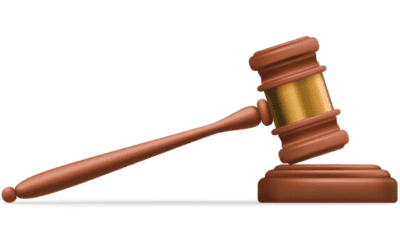Introduction
The presence of air pollution in Bangladesh presents a substantial peril to both the well-being of the general public and the overall ecological balance. The accelerated process of industrialization, urbanization, and the release of emissions from vehicles collectively contribute to the degradation of air quality.
Acknowledging the profound significance of the circumstance, the governing body has enacted a sequence of legislative measures and regulatory frameworks aimed at mitigating and managing atmospheric pollution.
Regulatory Framework
a. Air Pollution Conservation Act, 1995
The Environment Conservation Act of 1995 is a pivotal legislative framework that grants the government the authority to undertake essential actions aimed at the preservation and safeguarding of the environment. It establishes the necessary legal framework for effectively mitigating a range of environmental concerns, such as the detrimental impacts of air pollution.
The legislation delineates consequences for infractions and establishes the Department of Environment (DoE) as the governing body responsible for supervising and implementing environmental regulations.
b. Bangladesh Environmental Conservation Rules, 1997
The Bangladesh Environmental Conservation Rules, 1997, function as a comprehensive framework of regulations established in accordance with the Environment Conservation Act. These regulations offer comprehensive directives for industries and entities to adhere to in effectively managing and mitigating their greenhouse gas emissions. The aforementioned measures encompass the establishment of emission standards, waste management protocols, and reporting requirements across diverse sectors.
Air Quality Standards
The governmental authorities in Bangladesh have established air quality standards with the objective of monitoring and regulating various pollutants present in the atmosphere. The prescribed guidelines, as set forth by the Department of Environment, encompass acceptable thresholds for various pollutants, including sulfur dioxide (SO2), nitrogen dioxide (NO2), particulate matter (PM10 and PM2.5), carbon monoxide (CO), and ozone (O3). Continuous monitoring is essential to ensure adherence to these established standards.
Industrial Emission Control
a. Factories Act, 1965
The legislative framework established by the Factories Act, 1965, encompasses provisions pertaining to the regulation of industrial emissions and the imperative aspect of pollution control. It grants the government the authority to implement regulatory measures on factories and industrial operations in order to mitigate and prevent the detrimental impacts of environmental pollution.
The legislation delineates the necessary provisions for acquiring environmental clearances, upholding emission standards, and executing pollution control measures.
b. Environment Impact Assessment (EIA)
Industrial projects and expansions are subjected to an Environmental Impact Assessment (EIA) in order to comprehensively assess and analyze their potential environmental repercussions. The Environmental Impact Assessment (EIA) process plays a crucial role in ensuring that proposed projects adhere to environmental standards, encompassing those pertaining to air pollution. Projects are granted approval solely upon satisfying the predetermined criteria.
Vehicle Emission Standards
The mitigation of vehicular emissions plays a pivotal role in the management of air pollution. The implementation of vehicle emission standards by the government serves as a crucial measure to mitigate the release of pollutants originating from vehicular sources. The parameters encompassed by the standards include carbon monoxide, hydrocarbons, nitrogen oxides, and particulate matter. It is imperative for vehicle owners to engage in routine inspections and strictly adhere to emission standards.
Regulatory Authorities
a. Department of Environment (DoE)
The Department of Energy (DoE) assumes a pivotal role in the implementation and enforcement of environmental regulations, particularly those pertaining to air pollution. The organization carries out comprehensive inspections, diligently monitors the state of atmospheric conditions, and initiates necessary legal measures against entities found to be in contravention of environmental regulations. The Department of Energy (DoE) also endeavors to enhance public consciousness and advocate for the adoption of environmentally sustainable behaviors.
b. Bangladesh Environmental Lawyers Association (BELA)
Non-governmental organizations, such as BELA, play a vital role in actively contributing to the preservation and safeguarding of our environment. BELA actively participates in public interest litigation, advocating for the protection and preservation of environmental rights. Additionally, BELA works in close collaboration with relevant authorities to ensure the efficient and successful implementation of environmental laws.
Penalties and Enforcement
Stringent penalties have been implemented to address and deter violations of air pollution laws. Entities that do not adhere to emission standards, environmental clearances, or waste disposal regulations may be subject to penalties, closure mandates, or legal consequences. The implementation of penalties acts as a deterrent mechanism, fostering a heightened emphasis on environmental compliance among both businesses and individuals.
Public Awareness and Participation
The preservation of our environment necessitates a collaborative endeavor, with public consciousness assuming a pivotal position. The government, in collaboration with environmental organizations, implements various initiatives such as awareness campaigns, workshops, and educational programs to disseminate knowledge among citizens regarding the detrimental effects of air pollution and the significance of adopting sustainable practices.
Challenges and Future Directions
a. Challenges
The formidable obstacles encountered in the endeavor to mitigate air pollution encompass the swift process of urbanization, insufficiencies in waste management systems, and the proliferation of industrial activities. In order to effectively tackle these challenges, it is imperative to develop and implement comprehensive strategies, leverage technological advancements, and foster public cooperation.
b. Future Directions
The government is actively engaged in the exploration of sustainable strategies aimed at mitigating air pollution. These strategies encompass the promotion of renewable energy sources, the improvement of public transportation systems, and the integration of smart city concepts. The incorporation of sustainable technologies and the cultivation of global partnerships are fundamental elements within prospective strategies.
Conclusion
In summary, the legal framework in place in Bangladesh pertaining to air pollution control demonstrates a steadfast dedication to the principles of environmental sustainability.
The intricate dynamics between legislative measures, regulatory frameworks, and the implementation of enforcement mechanisms highlight the steadfast commitment of the government in addressing air pollution and fostering a more salubrious living environment for its populace.
As our society advances, it is imperative that we maintain a steadfast commitment to robust enforcement measures, widespread public education, and groundbreaking strategies in order to effectively attain and maintain a state of air quality that is environmentally sustainable.



